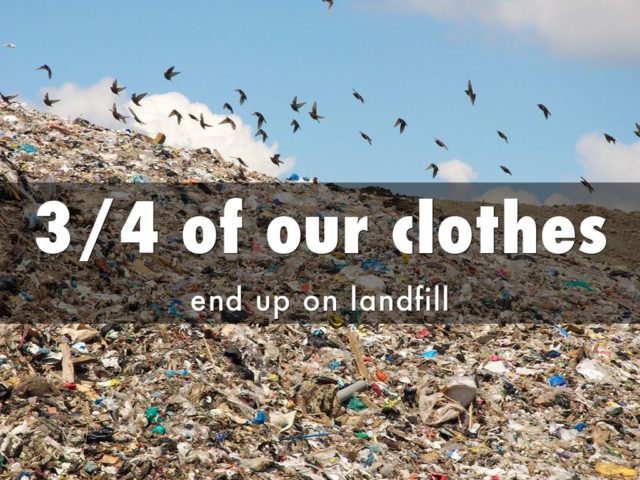Scientists are working to discover the sources of water pollution and have found clothing to be a major contributor. New studies show that microplastics from synthetic textile clothing and car tires pollute waterways worse than the recently banned plastic microbeads from cosmetics. Other studies found that microfibers from synthetic clothing pollute waterways even worse than their microplastics. These discoveries are important as they show that water pollution stems from much more than trash and allow scientists to consider ways that manufactures and consumers can do their part. In other words, our clothes is fucking up the ocean and food supply
According to the International Union for Conservation of Nature (IUCN), microplastics contribute between 15 to 31% of the ocean’s plastic pollution annually. Almost two-thirds of this pollution comes from synthetic textiles and tires while microbeads from cosmetics compose up to 2%. Microplastics in clothing enter the water supply when clothes are washed, and tires shed microplastics when vehicles are driven. Additional sources of primary microplastic pollution includes marine coatings, road markings, personal care products, and city dust.
IUCN Director General Inger Andersen says, “This report is a real eye-opener, showing that plastic waste is not all there is to ocean plastics.” She continues,“Our daily activities, such as washing clothes and driving, significantly contribute to the pollution choking our oceans, with potentially disastrous effects on the rich diversity of life within them, and on human health. These findings indicate that we must look far beyond waste management if we are to address ocean pollution in its entirety.”
Sadly, water pollution caused by the synthetic fibers in clothing extends beyond microplastic contamination. Microfibers from synthetic textile clothing pollute both oceans and fresh water more than the microplastics that they shed. Scientists found that microfibers compose the majority (71%) of debris in the Great Lakes, and that they are “weaving themselves into the gastrointestinal tract” of fish. It was also found that microfibers constitute 85% of human-made debris on ocean shorelines around the world.
A study that examined synthetic fleece jackets found that 1.7 grams of microfibers are released during each wash, and older jackets shed almost twice as much as new ones. The study stated, “These microfibers then travel to your local wastewater treatment plant, where up to 40% of them enter rivers, lakes and oceans.”
The pollution harms wildlife and effects the food chain. Scientists found that microfibers altered the behavior of crabs when they ate food contaminated with them. Researcher Sherri Mason says that micofibers absorb chemicals and cause toxins to concentrate in animal tissues at high levels.
Microfiber and microplastic pollution rates varied geographically. When fish and shell fish from Indonesia and the US were analyzed for human-made debris, researchers found that fish from Indonesia fish were contaminated with plastic, and American fish were primarily contaminated with fibers. Studies found that plastic from tires are the top microplastic pollutant in some continents while microplastics from synthetic textiles are the dominate pollutant in other continents.
Discovering the source of pollution allows opportunity to stop the pollution where it starts. Proposed solutions to the microfiber and microplastic pollution caused by clothing are to make clothes of high-quality natural fibers, develop washing machines that filter the debris, use a laundry ball or laundry bag to catch the fibers, and make adjustments to how clothes are washed. Pollution is a global problem that requires the effort of consumers and manufactures to fix it.







